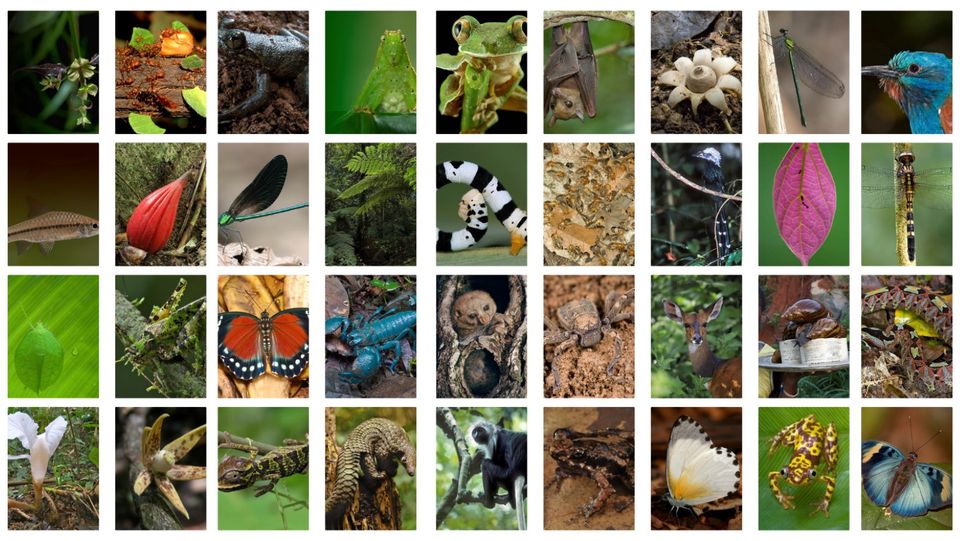COP15: Making A Case for Atewa Forest
Parties to the Convention on Biological Diversity (CBD) together with other non-state actors including Civil Society Organisations (CSOs), private sector and faith-based organisations have since last week been negotiating workable solutions for the conservation and sustainable use of biological diversity and related issues at the ongoing United Nations (UN) biodiversity conference—COP15. The theme for the COP is ‘Ecological Civilisation: Building and shared future for all life on earth. The COP is working towards an ambitious yet actionable and smart post 2020 biodiversity framework to address the unprecedented depletion of biodiversity across the world.
For A Rocha Ghana (ARG) it was an opportunity to make a case for the Atewa Range Forest Reserve—Ghana’s Crown Jewel of biodiversity. For almost a decade, ARG has advocated the need to protect the forest and all the ecosystem services that it has offered the country for generations past.
At this year’s COP15 held in Montreal, Canada, ARG’s National Director, Dr. Seth Appiah-Kubi shared at the Nature Positive Pavilion: “Prospects for State Positive Financing for Nature-Based Solutions to provide critical public goods: The Case of the Atewa Forest Reserve in Ghana.”
In his presentation, Dr. Appiah-Kubi highlighted the urgent need for Nature Based finance to secure Atewa’s water for 5 million people while proposing a shift to green investment to secure the forest as a critical Nature-based Solutions (NbS). He also called for the prioritization of water provisioning services and biodiversity conservation in the forest through appropriate conservation finance mechanisms.
Current state of the Forest
The forest hosts 1,134 plant species, 239 bird species, 69 mammals, 40 amphibians, 14 reptiles and 711 butterfly species. The butterfly species found within Atewa represent 77% of all butterfly species found in Ghana. The number of globally threatened species recorded in Atewa Forest is amongst the highest known for any forest in West Africa.
The forest also provides water for communities in the heart of the forest all the way down to the coastal city of Accra. Those fresh water sources rise from the forest’s mountaintops, the very place that Ghana’s government wants to mine bauxite.
With illegal gold mining already damaging communities’ water sources, and ridding the forest of its biodiversity, bauxite mining will be another nail in the coffin of the forest’s ecosystem service provision.
Options
At the session, Dr. Appiah-Kubi took participants through the many options that the government of Ghana could pursue instead of the bauxite deal. These options he said will ensure financial and community benefits without causing irreversible damage to the Atewa Forest.
According to him, “this can be achieved through state positive finance and green development projects such as ecotourism, sustainable harvesting of botanicals and non-timber forest products (NTFPs), agroforestry with tree crops around the forest, emissions reductions projects, and others.”
 Making Atewa Forest a National Park just like Kakum will the area a thriving eco-tourism destination.
Making Atewa Forest a National Park just like Kakum will the area a thriving eco-tourism destination.
Eco/NatureTourism
Explaining further the options, Dr. Appiah-Kubi said the government of Ghana could explore the Eco Toursim and Nature Tourism of the Atewa landscape which will in the long term promote ecologically sustainable development in the area.
This he said will encourage respect and cultural sensitivity in host-guest relations, can promote appreciation for wildlife, environmental, and cultural conservation, create 1000s of jobs for local communities and pool in large revenue source for government through taxes and the tourism levy.
 Exploring Botanical products
Exploring Botanical products
Another option highlighted was the enhancement of forest botanicals market value chains which includes high-end non-timber forest products and spices such as griffonia, voacanga, Aframomum (fom wisa) and other spices and pharmaceutical ingredients.
Currently in the Atewa landscape, farmers are already intercropping griffonia and voacanga as well as Afromomum (fom wisa) on their cocoa farms, and they have very high market value. This option if well developed, has the tendency to create jobs for local communities especially women. Because of the high market values, these crops can be processed and exported.
Other options discussed includes an emissions reduction programme which has the potential of promoting the improved management of the Atewa Forest, scaling-up of agroforestry, promoting green investment in the forest and surrounding communities which can eventually result in accruing carbon credits to communities, while creating lots of forest management related jobs for the teeming youth in the landscape.



